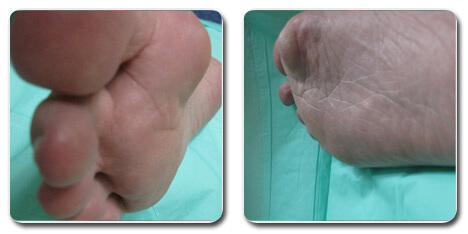Bunion Anatomy And Progression
According to USAToday, an estimated 4.4 million people report having bunions each year. When bunions are discovered in the early stages, doctors may be able to treat them with orthotics and exercises designed to strengthen the foot. However, as the bunion worsens and grows more severe, surgery may be required to correct the problem.
The experienced podiatrists at La Peer Health Systems’ Bunion Center of Excellence believe it’s important that people know how to identify bunions and other foot conditions so they can seek treatment before the problems become debilitating. We offer state-of-the-art technology and minimally-invasive surgery for bunions, so every patient walks out of surgery.
If you have a question about bunion anatomy and progression, want to find out if you have a bunion, or think you may be suffering from a foot condition, don’t hesitate to contact our experienced Beverly Hills podiatrists today by calling (888) 552-9732.
What Is A Bunion?
Bunions are bulges made up of bone and soft tissue that develop on the inside of the foot and make walking and performing other activities difficult. In most cases, bunions occur at the joint between the big toe and the first bone in the foot.
Over time, the first metatarsal moves towards the middle of the body and the second toe moves in the opposite direction towards the rest of the toes. Bunions may also occur at the base of the small of fifth toe. This is commonly referred to as a bunionette or a tailor’s bunion.
By forcing the big toe inward, bunions squeeze the other toes and force them into different positions. As the condition progresses, the toes may even bend into the claw-like formation known as hammertoe.
Is It A Bunion?
Bunions cause pain and swelling of the big toe joint. People with bunions may notice that their big toe turns away from the other toes of the foot. Additionally, the skin around the bunion may appear red and calloused or even feel sore.
In severe cases, the overall shape of the foot may appear changed. If you’re experiencing persistent pain, swelling of the foot, a lump on the outside of the foot, pain in the joint of the big toe or restricted movement, do not hesitate to call the Bunion Center of Excellence.
Bunion Anatomy And Progression
Bunions typically begin as bumps protruding from the big toe joint. However, over time, bunions can worsen to the point that the big toe no longer aligns properly with the other toes of the foot and range of motion becomes limited. When big toe mobility is limited, a patient is said to be suffering from hallux limitus.
With hallux limitus, the big toe loses it ability to function properly, and the patient begins to transfer more weight to the bunion while walking. This habit can actually force the hallux out even farther. If you think you may be suffering from a bunion, it’s important to seek treatment early to ensure that the condition does not become debilitating.
Frequently Asked Bunion Questions:
Q: How do I know if I have a bunion?
A: Bunions are bumps occurring at the big toe joint that restrict movement in the foot and toe. If you think you may have a bunion, the best thing you can do is to see an experienced podiatrist for an examination.
Q: How will the doctor diagnose the progression of my bunion?
A: Our podiatrists will likely order X-rays to diagnose the progression of the bunion. They may also measure the angles between the bones of the toes.
Q: What are the stages of bunion progression?
A: Bunions are generally categorized as mild, moderate or severe. More severe bunions restrict movement in the foot.
Q: When should I seek treatment for my bunions?
A: You should see a doctor if you experience any of the following foot symptoms:
- Continual toe and foot pain
- A bump or protrusion of the big toe joint
- Restricted movement of the big toe or the entire foot
- Difficulty finding shoes that fit the feet
Contact A Los Angeles Podiatrist
To seek treatment for bunions or other foot problems, contact the knowledgeable podiatrists at the Bunion Center of Excellence today. Our entire staff is well-trained and experienced in dealing with bunions. If you have a bunion problem, contact us today at (888) 552-9732.
Next, learn more about Bunion Testing and Treatment.
Spread the word and share this essential article, “Bunion Anatomy and Progression,” with your loved ones today! By sharing this informative piece, you can help raise awareness about the underlying causes of bunions and the steps that can be taken to prevent their progression. Let’s work together to promote healthy foot care practices and keep our feet pain-free for years to come!
See Also:
- Bunion surgery both feet
- Flip flops for women with bunions
- Best bunion surgeon in los angeles
- Sandals to help bunions
- Best Shoes for Cuboid Syndrome
- Best Shoes For Accessory Navicular Syndrome
- Best Shoes For Swollen Feet and Ankles
- Best High Heels for Flat Feet That Will Feel Like Sneakers
- Comfortable Shoes To Wear After Foot Surgery
- Best Shoes after Triple Arthrodesis
- Best Shoes for Ingrown Toenails
- Best Cute Sandals That Hide Bunions
- Best Shoe After Calcaneal Fracture
